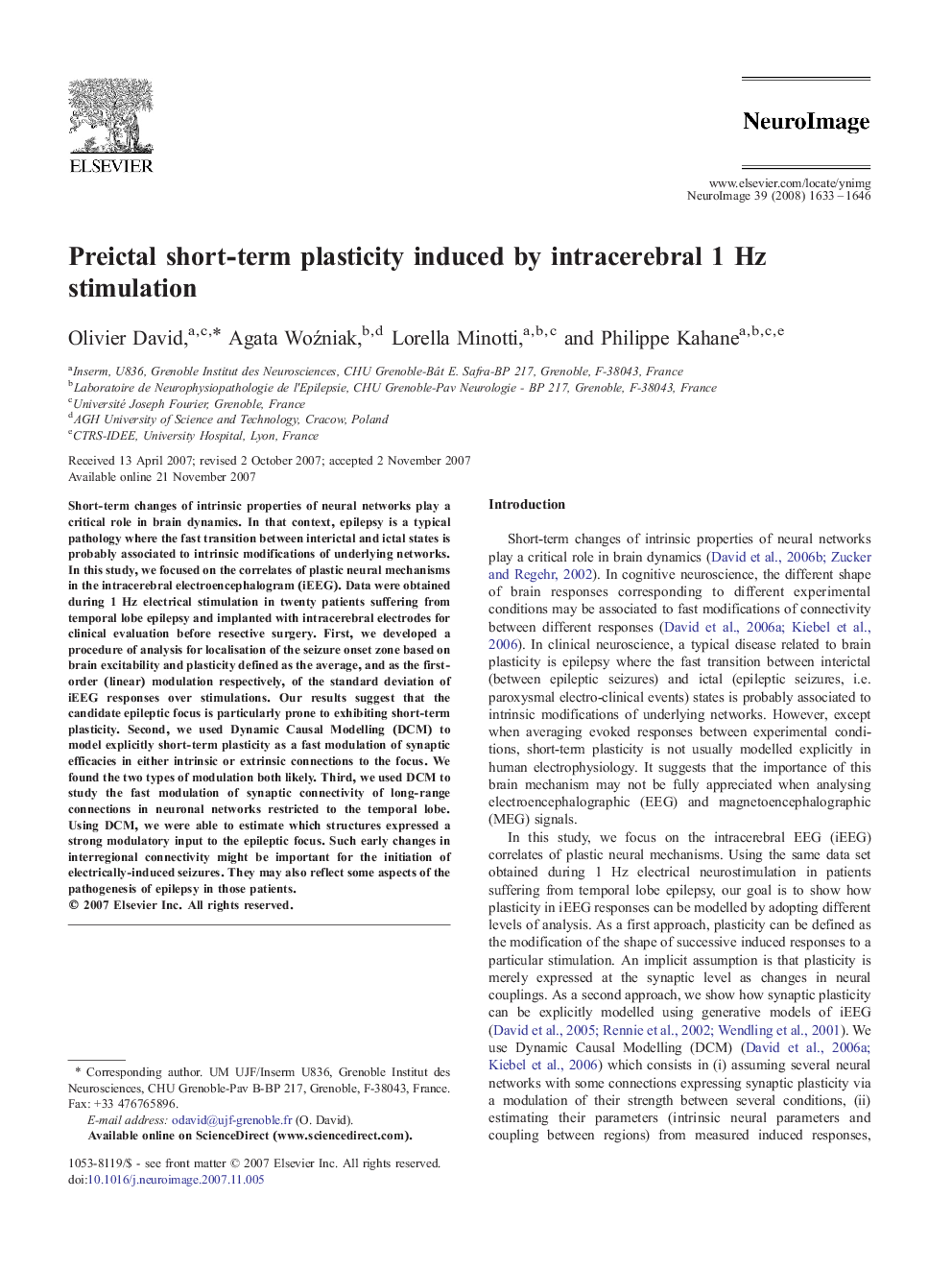| Article ID | Journal | Published Year | Pages | File Type |
|---|---|---|---|---|
| 3073377 | NeuroImage | 2008 | 14 Pages |
Short-term changes of intrinsic properties of neural networks play a critical role in brain dynamics. In that context, epilepsy is a typical pathology where the fast transition between interictal and ictal states is probably associated to intrinsic modifications of underlying networks. In this study, we focused on the correlates of plastic neural mechanisms in the intracerebral electroencephalogram (iEEG). Data were obtained during 1 Hz electrical stimulation in twenty patients suffering from temporal lobe epilepsy and implanted with intracerebral electrodes for clinical evaluation before resective surgery. First, we developed a procedure of analysis for localisation of the seizure onset zone based on brain excitability and plasticity defined as the average, and as the first-order (linear) modulation respectively, of the standard deviation of iEEG responses over stimulations. Our results suggest that the candidate epileptic focus is particularly prone to exhibiting short-term plasticity. Second, we used Dynamic Causal Modelling (DCM) to model explicitly short-term plasticity as a fast modulation of synaptic efficacies in either intrinsic or extrinsic connections to the focus. We found the two types of modulation both likely. Third, we used DCM to study the fast modulation of synaptic connectivity of long-range connections in neuronal networks restricted to the temporal lobe. Using DCM, we were able to estimate which structures expressed a strong modulatory input to the epileptic focus. Such early changes in interregional connectivity might be important for the initiation of electrically-induced seizures. They may also reflect some aspects of the pathogenesis of epilepsy in those patients.
